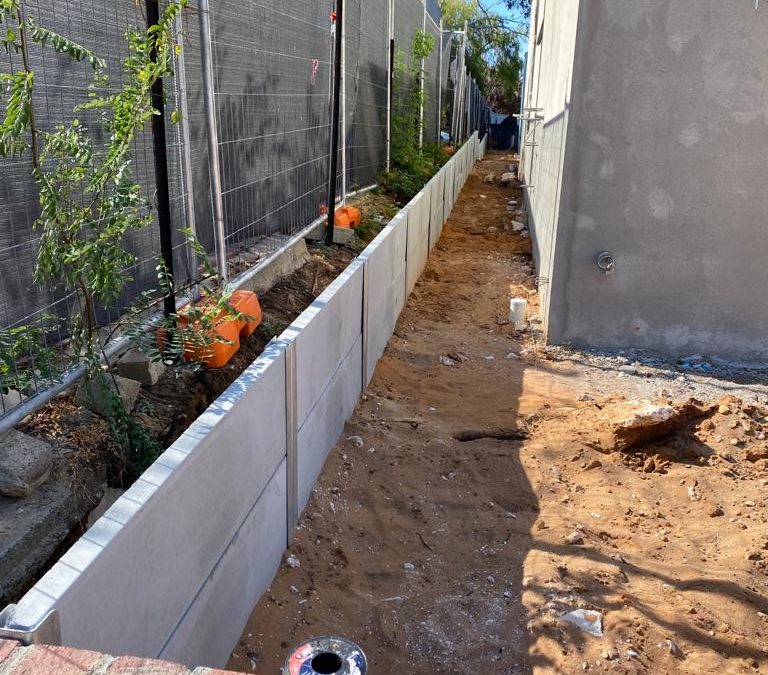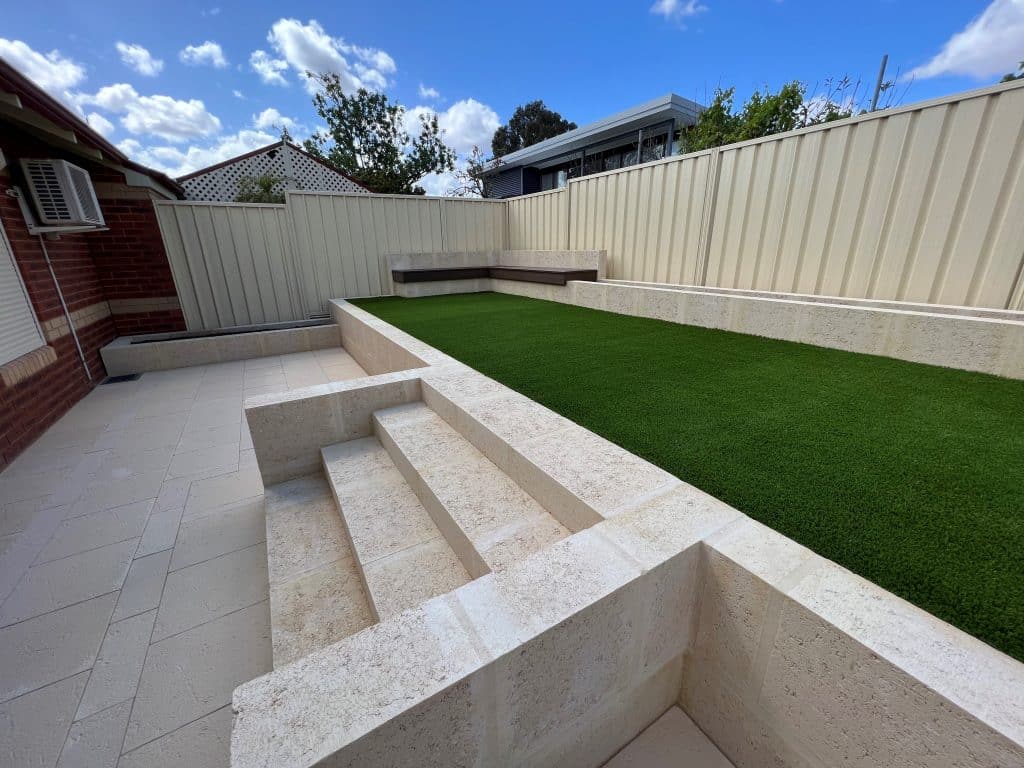Making The Most Of Outside Space: How Retaining Walls Develop Practical and Aesthetic Landscape Functions
In the realm of outdoor landscape design, retaining wall surfaces work as both a visual possibility and a useful necessity. These frameworks not just assist to stop soil erosion and develop level surfaces in sloped areas but additionally offer a canvas for cutting-edge layout elements that can transform an ordinary exterior area into a visually enticing shelter. By exploring the benefits, layout choices, incorporation of plant, illumination techniques, and maintenance tips linked with preserving wall surfaces, one can uncover the secrets to taking full advantage of outdoor room in a means that merges practicality with elegance effortlessly.
Advantages of Keeping Wall Surfaces
Preserving walls provide a wide range of advantages, acting as effective architectural services that boost both the functionality and aesthetic appeal of outdoor rooms. One key advantage of keeping wall surfaces is their capability to stop dirt disintegration. By keeping back soil on sloped landscapes, these wall surfaces aid maintain the integrity of the terrain, stopping landslides and protecting the landscape's charm. In addition, preserving wall surfaces can create extra usable room in areas with irregular topography. This opens opportunities for landscape design, gardening, or also the construction of outside living locations that were previously unwise due to the slope.
Moreover, maintaining walls add to the overall stability of a home. By sustaining soil and redirecting water overflow, these frameworks aid protect buildings, roads, and other frameworks from possible damage caused by moving earth. The aesthetic advantages of maintaining walls must not be forgotten either. With a variety of materials, designs, and shades readily available, keeping walls can match the existing landscape and raise the visual appeal of outdoor rooms.
Layout Options for Retaining Walls
Various design choices for enhancing the visual appeal and performance of outdoor areas with the use of maintaining wall surfaces include a variety of structures, products, and configurations. Timber retaining walls can add warmth and blend well with all-natural environments.
In regards to textures, keeping wall surfaces can be smooth, harsh, or also patterned, including deepness and aesthetic passion to the outdoor space. Textured walls can produce focal factors or seamlessly blend into the surroundings, depending upon the layout objectives.

Incorporating Greenery in Retaining Wall Surfaces
When considering ways to enhance outdoor rooms better, the assimilation of plant right into maintaining wall surfaces can bring a natural and refreshing component to the landscape layout. Retaining Walls Sunshine Coast. Including greenery such as cascading creeping plants, vibrant flowers, or lush shrubs right into the style of maintaining wall surfaces not only adds aesthetic charm however also adds to the total performance of the area. Greenery softens the hardscape of see this page the retaining wall surface, producing a harmonious mix between the built setting and nature

Lights Techniques for Preserving Walls
To boost the visual allure and performance of exterior spaces, applying calculated lighting methods can effectively highlight the architectural attributes of keeping wall surfaces. Lighting plays an essential duty in transforming the atmosphere of exterior areas, specifically at night. Retaining Walls Sunshine Coast. Meticulously planned illumination can produce a magnificent visual impact while additionally serving practical functions such as safety and security and protection. when it great post to read comes to retaining walls.

Another effective lighting technique is the incorporation of solar-powered lights. These green components can be conveniently set up without the demand for difficult circuitry, making them a cost-efficient and lasting alternative for enlightening maintaining walls. By integrating different lighting techniques, exterior rooms can be changed into charming settings that can be appreciated both night and day.
Maintenance Tips for Retaining Wall Surfaces
Reliable upkeep of keeping walls is necessary to ensure their longevity and architectural stability. Regular inspection is vital to determining any issues beforehand. Look for indications of erosion, fracturing, or bulging, as dealing with these concerns immediately can avoid more extensive damages. Cleaning debris such as fallen leaves, dust, and plants from the top of the drain and the wall system helps prevent clogs and water build-up that might compromise the wall surface's stability.
Cleaning up the surface area of the keeping wall surface periodically with a pressure washing machine or a brush and mild detergent can aid avoid the build-up of dirt, mold, or spots that not just affect the wall's look yet can also damage its structure with time. Additionally, repairing any type of splits or damages as quickly as they are discovered is crucial. Using the proper products and techniques for repair services Read More Here will certainly assist preserve the wall surface's toughness and overall functionality.
Regularly maintaining the greenery around the maintaining wall surface is additionally vital. Cut any kind of overhanging branches or origins that can apply stress on the wall surface or create water drainage concerns. By adhering to these upkeep pointers, you can help ensure that your retaining walls remain both functional and visually appealing for years ahead.
Verdict
Finally, preserving walls offer many advantages for taking full advantage of outside area, both functionally and aesthetically. With various layout alternatives, unification of plant, and appropriate illumination techniques, retaining wall surfaces can boost the general landscape style. It is essential to frequently preserve retaining wall surfaces to guarantee their longevity and effectiveness in developing an aesthetically appealing outdoor environment.
Bent walls can soften the appearance of the landscape, while straight wall surfaces use an even more contemporary feeling.Strategic positioning of plant pockets or planter boxes within the maintaining wall framework enables for the addition of plant without compromising the architectural stability of the wall. Furthermore, the incorporation of plant in keeping wall surfaces can assist with erosion control, as plant roots help support the soil behind the wall surface.
Cleaning debris such as fallen leaves, dirt, and plants from the top of the drainage and the wall system aids avoid clogs and water buildup that might endanger the wall's stability.
Cleansing the surface of the keeping wall regularly with a stress washing machine or a brush and mild cleaning agent can aid prevent the accumulation of dust, mold and mildew, or stains that not just affect the wall surface's look yet can also compromise its framework over time.